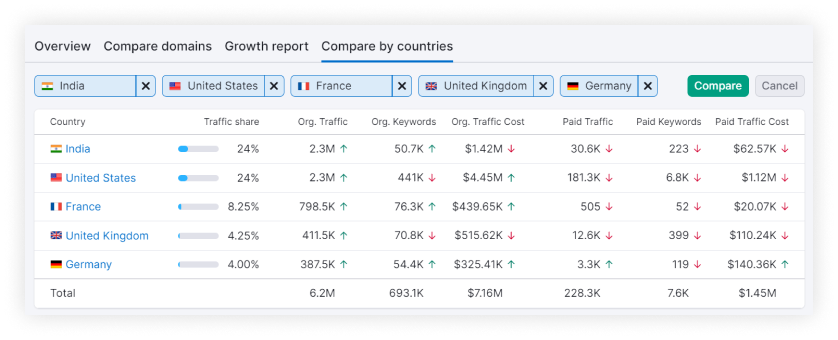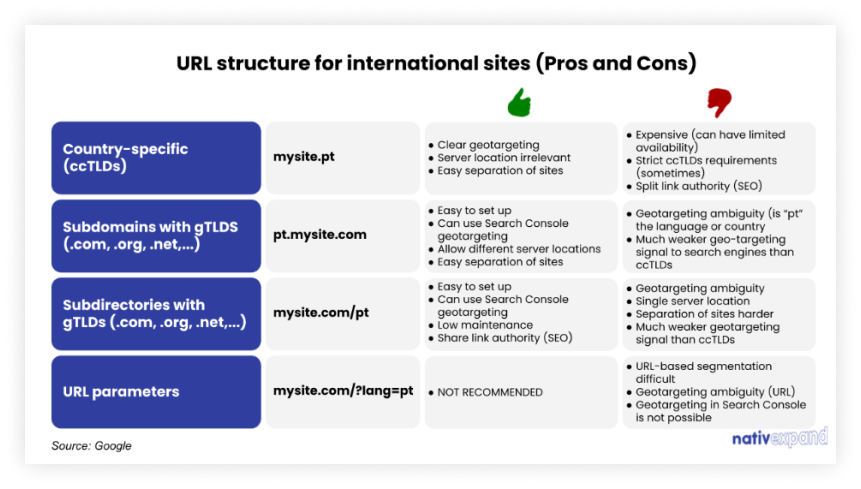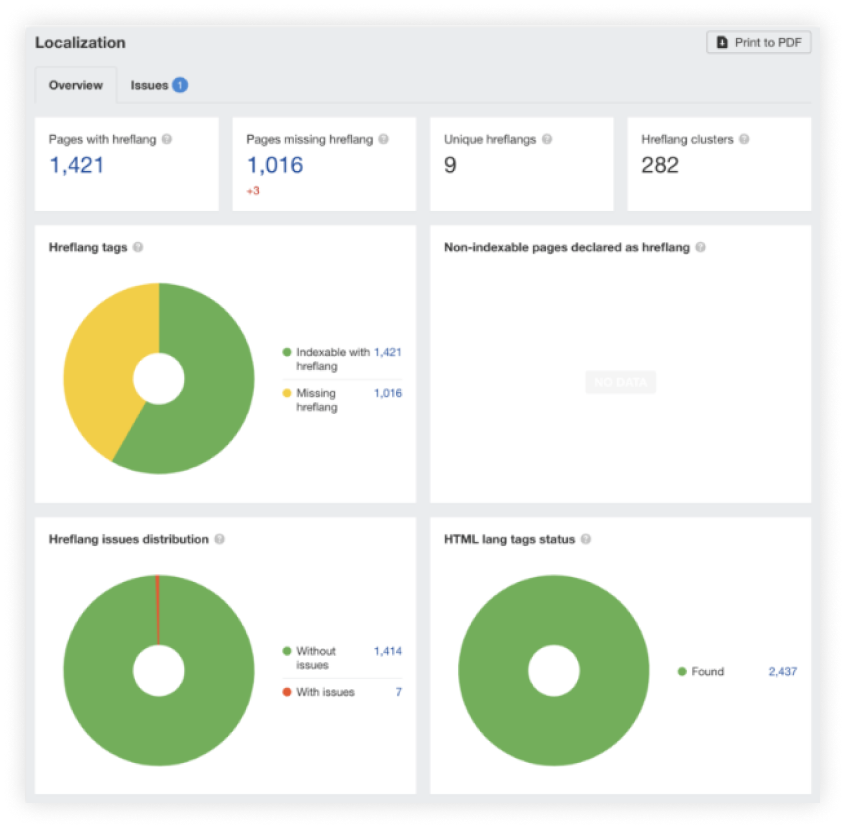Introduction
Businesses that sell products or services worldwide want their websites to operate in their target markets. That’s where they’ll need international SEO to build a name for themselves. International SEO is considered fairly difficult, and here is where most firms fall short.
Despite popular belief, international SEO may benefit small businesses by expanding their market and generating a high return on investment. For businesses seeking to navigate the complex world of International SEO, it’s worth considering that they can hire an SEO agency with expertise in this field. Let’s learn more about international SEO and many of its guiding principles.
What is International Search Engine Optimization (SEO)?
International Search Engine Optimization (SEO) is optimizing a website or online content to make it more visible and relevant to users in multiple countries or regions around the world. You can check the presence of your content in various countries with the help of tools like SEMrush.

Why Is International SEO Strategy Important?
In order to get a competitive advantage and increase traffic, you can target specific countries with your content. Here are a few important benefits of an international SEO strategy:
- Worldwide Market Exposure: Implementing an international SEO strategy allows your business to reach a global audience. This exposure can be invaluable in a world where the internet connects people from all corners of the globe.
- Expanding Consumer Base: By optimizing your website for international search engines and different languages, you can tap into new markets and expand your consumer base beyond your domestic audience.
- Advantage Over Your Competitors: Not all businesses invest in international SEO. By doing so, you gain a competitive advantage, especially if your competitors are primarily focused on their local or domestic markets.
- Brand Recognition: SEO efforts tailored for international audiences help in building brand recognition on a global scale. This recognition is essential for building trust and credibility among potential customers in different regions.
- Increase Leads and Sales: With an effective international SEO strategy, you can generate more leads and sales from around the world. Appearing in relevant search results means more potential customers finding your products or services.
- Increase Organic Traffic: International SEO can significantly increase organic (non-paid) traffic to your website. This is not only cost-effective but also indicates that people are genuinely interested in your content or offerings.
How does international SEO work?
International SEO is more than just releasing sites with new content and implementing hreflang. Developing an effective international SEO strategy involves several steps and considerations:
1. Decide your target audience and market
Determine which international markets you want to target. Consider factors like market size, competition, and demand for your products or services in each region.
2. Choosing an International domain or URL structure
Decide on the domain structure for your international SEO needs. You have several options:

(Image source: nativExpand )
- Country Code Top-Level Domain (ccTLD): These domains, like .uk or .fr, are specific to individual countries. They can be a strong signal of localization to search engines. They consist of usually two or three letter domains.
- Generic Top-Level Domain (gTLD): These are generic domains like .com or .org. They are less location-specific and more versatile for international expansion.
- ccTLD or gTLD with Subdomains: You can use subdomains like fr.example.com or uk.example.com to target specific countries while retaining a primary gTLD.
- ccTLD or gTLD with Subdirectories: You can use subdirectories like example.com/fr/ or example.com/uk/ to organise content by country.
If you want to target areas where many languages are spoken, you’ll need a structure that contains both country and language subdomains.
3. International keyword research
Conduct thorough keyword research for each target market. To conduct effective keyword research for multiple markets, it’s crucial to understand that terminology and search behaviour vary across countries, even if they share a common language. This can significantly impact the keywords potential customers use while searching.
You may utilize Ahrefs, SEMrush, Google Keyword Planner, or other SEO tools to gather insights into search volume, keyword variations, and related terms for each market.
For instance, using tools like SEMrush can provide insights. An example would be observing that the term ” international seo” garners the highest search volume in the US, with approximately 2,400 monthly searches.

4. Optimizing content for regions and their language
Create localized content for each target market. This includes translating and adapting your content to suit the cultural and linguistic preferences of the region. Make sure to consider not only language but also currency, units of measurement, and cultural references.
5. Inter-linking to the right market
Internal linking is a crucial aspect of optimizing your international website for both user experience and search engine performance. Here are some steps to get your internal linking right when expanding into different markets:
- Always ensure that internal links on your website point to the correct version or subdomain designated for each target market. This prevents users from landing on the wrong version of your content.
- Implement dedicated navigation menus that allow users to easily switch between different country market versions. This is particularly helpful when users accidentally land on the wrong version.

6. Ensure that Google accurately serves the right version
To ensure that Google accurately serves the right version of your content to users in different markets, several strategies need to be implemented:

( Image source: Ahref )
- Tags for HrefLang: HrefLang is created for multilingual websites that deliver visitors relevant material in their language. HrefLang Tags are applied to a website that allows cross-reference pages with comparable information for different language audiences.
As an example — (I am the American version, please index me in the US )
As an example — (I am the Arabic version and would only like to be operated and served in the UAE).
The hreflang property may be used in three different ways: HTML, Sitemaps, and HTTP headers. - The Default Tag for X: When the language or locale tag does not meet any of the available options and no other page is more suited, the default tag is a default version of the site that you may select to serve users. There are two versions of the website: one for the United Kingdom and one for the United States. As a result, if someone from Australia searches for comparable phrases, you’d X Default them to the desired version.
- Language Targeting: The dialect in which the HTML content is produced is indicated by a language tag, which might also contain the nation. This metadata informs search engines about the page’s intended audience.
As an example- <meta http-equiv=”content-language” content=”en-us”> - Geotargeting: It is the most important aspect of international SEO. This involves regionally structuring and optimizing your website. Allowing search engines to recognize the nations and languages spoken by each user in a certain place.
Install Google Analytics as well as Google Search Console with each property to track your SEO progress. Both of these techniques can aid in the detection of potential technical or indexing difficulties.7. Creating International Connections
Link building is especially important for websites with ccTLDs as well as subdomains since you’ll need links for them.
- Look for websites that are related to your market and include a list of your rivals. Examine the kind of material that individuals are producing for outreach to see if you can see any possible placements. This will assist you in comprehending the cultural aspects of your target market.
- Create visually appealing and search-engine-optimized material for your intended user’s language regarding your offerings, long-tail search results, business topics that may be of appeal to them, and other topics that should earn them links.
Tools for International SEO
Certainly, here are some commonly used tools for international SEO:
- HubSpot: HubSpot provides a suite of marketing tools, including content management and SEO optimization features that can help you manage and track international SEO efforts.
- Moz: Moz offers a range of SEO tools, including keyword research, site audits, and backlink analysis. These can be valuable for optimizing your website for international search.
- Google Analytics: Google Analytics provides in-depth insights into your website’s performance, including traffic, user behaviour, and conversions from different countries, helping you measure the success of your international SEO campaigns.
- Google Search Console: This tool allows you to monitor how your site is performing in Google search results, check for indexing issues, and see which keywords are driving traffic from international regions.
- Semrush: Semrush offers keyword research, site audit, and competitive analysis tools that can be used to optimize your international SEO efforts and track your competitors in different markets.
- Schema Markup: Schema markup can help enhance the rich snippets displayed in search results, making your content more attractive to users. Implementing schema markup correctly can improve your international SEO.
- Ahrefs: Ahrefs is a comprehensive SEO toolset that includes features for keyword research, backlink analysis, content analysis, and more. It’s useful for monitoring your international SEO performance and competitive landscape.
How long does international SEO take to work?
International SEO can vary significantly in the time it takes to see substantial results. It depends on several factors, such as the competitiveness of the target keywords, the quality of your content, the strength of your backlink profile, the existing domain authority, and the specific strategies implemented.
Generally, you may start to see some initial changes and improvements within a few months after implementing international SEO strategies. However, to achieve substantial and long-lasting results, it often takes at least 6 to 12 months or even longer.
This duration allows search engines to index and rank the optimized content, and for your website to gain trust and authority in the international markets. Remember, international SEO is an ongoing process rather than a one-time task.
What’s the Difference Between Local SEO and International SEO?
One of the first stages in international SEO is to localize website content. Your worldwide page should not be a carbon copy of the website for your local nation. Optimizing your website for a certain country’s local audience will improve the website’s overall user experience. Otherwise, versions of your website may fight for rankings or may not be shown at all if their overall performance is poor. Each country should take a different strategy for international SEO.
| Aspects | Local SEO | International SEO |
| Content | Emphasizes localized content that caters to specific geographical regions. Includes region-specific keywords and information. | Requires more generic and broad content to appeal to a global audience. Content may need translations for multiple regions. |
| Cost | Generally lower cost as it targets a smaller audience. Advertising budgets and campaigns are usually more manageable. | More costly due to the need for multi-language content and wider advertising campaigns |
| Techniques | Focuses on Google My Business, local directories, and on-page SEO for specific regions. | Involves link-building, and international SEO strategies such as hreflang tags and geotargeting. |
| Keywords | Emphasizes local keywords and long-tail phrases with geo-modifiers (e.g., “best pizza in New York”). | Targets international keywords, often without geographic modifiers, to reach a global audience. |
| Tags | Utilizes local meta tags, titles, and descriptions to help with local rankings and visibility. | Requires proper implementation of hreflang tags for language targeting and geotags for location targeting. |
| IP Locations | Critical for local SEO as search engines use IP addresses to determine the user’s location for local search results. | Important but more complex for international SEO to ensure the correct regional content is shown based on user location. |
| Target Audience | Focused on the immediate local community and its specific needs and interests. | Targets a broader, diverse, and global audience with varying preferences and interests. |
| Language and Cultural Considerations | Content often in the local language reflects local culture and may use slang or regional terms. | Requires translations, cultural sensitivity, and adaptability to different languages and cultural nuances. |
| Domain Structure | Often uses country code top-level domains (ccTLDs) or subdomains (e.g., example.co.uk or uk.example.com). | Typically employs generic top-level domains (gTLDs) or subdirectories (e.g., example.com/fr). |
| Example | A neighbourhood bakery in Chicago, optimizing its website for local keywords like “Chicago bakery” and utilizing Google My Business to appear in local map results. | A global e-commerce retailer uses hreflang tags to serve different versions of its website to users in different countries, providing localized product listings, prices, and currency options. |
Conclusion
International SEO emerges as an indispensable tool for those with aspirations that transcend geographic boundaries. International SEO demands a strategic approach, emphasizing the importance of multilingual and culturally relevant content, technical precision, and a thorough understanding of international markets. As businesses continue to expand their horizons, International SEO remains a vital compass, guiding them through the intricate web of global opportunities and challenges.
For those seeking expertise and support in navigating the intricacies of International SEO, enlisting the services of an SEO agency is a valuable option. These specialized agencies can provide valuable insights, strategies, and execution to ensure a smoother and more effective international SEO journey.






Leave A Comment